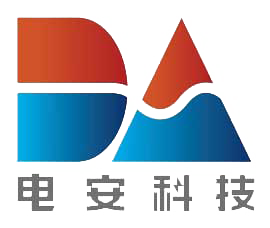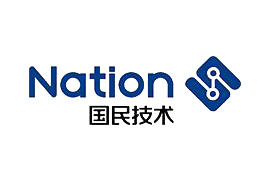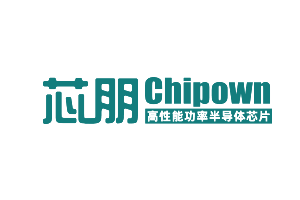
Silicon carbide and gallium nitride: advancing under different engine driving conditions
Both silicon carbide and gallium nitride have the characteristics of large bandgap width, high electron drift saturation speed, and good conductivity, which determine the application fields of silicon carbide and gallium nitride that partially overlap. Both can be applied in electric vehicles and photovoltaic energy storage fields.
But they also have their own advantages. For example, silicon carbide has more advantages in thermal conductivity, while gallium nitride has higher Electron mobility. Therefore, the application fields of silicon carbide and gallium nitride must be different. In response to this issue, the compound semiconductor market has conducted in-depth communication with multiple companies in the industry to understand the views and layouts of different companies.
Guoxing Optoelectronics bluntly stated that although silicon carbide and gallium nitride compete, each has its own focus. It is reported that silicon carbide focuses more on high-voltage applications, especially in the 800V voltage platform technology of electric vehicle batteries, and the high-voltage working characteristics of SiC will have more application advantages; GaN focuses more on high-frequency applications, which can reduce volume and weight, and improve efficiency in applications such as OBC, DCDC, and energy storage power systems.
However, in the future, with the further improvement of GaN's withstand voltage capability, its application advantages in the new energy market will become increasingly apparent when it can withstand an ultra-high voltage of 1200V and has higher cost-effectiveness. And SiC, with its inherent advantages, will further develop towards higher voltage withstand technology paths and be able to exert its strength in fields such as ultra-high voltage power grids.
Core Tower Electronics pointed out that GaN power devices not only have performance advantages similar to SiC in wide bandgap materials, but also have stronger cost control potential. Compared with traditional silicon materials, GaN based power devices have higher power output density and higher Energy conversion efficiency, and can make the system smaller and lighter, which can effectively reduce the size and weight of power electronic devices. With the explosive growth of the new energy vehicle market, GaN will also have its own place in the future.
Xinta Electronics also pointed out the challenges faced by GaN in the field of new energy vehicles. It is reported that due to the slow certification process at the vehicle level, there are high requirements for the reliability and safety of devices, and GaN faces competition from both silicon and SiC devices. Therefore, only if GaN is done well enough and the cost is low enough can it have strong competitiveness, otherwise it is difficult to achieve large-scale application and popularization. In addition, due to the low operating voltage of silicon based GaN power devices and the relatively expensive high voltage resistant SiC based GaN power devices, it is expected that GaN power devices will not be deployed in electric vehicles until after 2025.
Rom pointed out that both GaN and SiC have great potential in the application of power devices. Among them, GaN devices, as excellent devices in high-frequency operation, are highly anticipated in applications with medium voltage withstand ranges. Recently, Rom began mass production of 650V withstand voltage GaN HEMT with ultra-high performance in the industry, which is very suitable for improving the efficiency and miniaturization of various power systems such as servers and AC adapters.
It is reported that compared to SiC, GaN has excellent high-speed switching characteristics. Therefore, in fields such as base stations and data centers, GaN devices are highly expected to reduce the power consumption of various switching power supplies and achieve miniaturization; In the automotive industry, GaN devices can be applied to onboard OBCs and 48V DC/DC converters.
Overall, the competition between silicon carbide and gallium nitride in application is limited by the tolerance voltage of 600V-900V, with silicon carbide being the main component above this range, such as high-speed rail, power transmission and transformation, new energy vehicles, and industrial control; Below this range, gallium nitride has greater application potential, such as microwave RF, switches, and chargers.
In terms of market space, due to cost and technological reasons, silicon based semiconductor materials are still the mainstream in the market, and there is still significant room for improvement in the penetration rate of silicon carbide and gallium nitride devices.
Among them, the market size of SiC is higher than that of GaN. According to the latest report "2023 SiC Power Semiconductor Market Analysis Report Part1" by the Compound Semiconductor Research Division under TrendForce Consulting, the overall SiC power component market size reached 2.28 billion US dollars in 2023, with an annual growth of 41.4%. By 2026, the SiC power component market size is expected to reach 5.33 billion US dollars.
Growth fertile ground for silicon carbide: new energy vehicles
According to statistics from the China Passenger Car Association, in 2022, the retail sales of new energy vehicles in China reached 5.674 million units, a year-on-year increase of 90%; The rapid growth of retail sales has also driven a continuous increase in the penetration rate of new energy vehicles, reaching 27.6%, an increase of over 12 percentage points compared to 2021.
However, the development of new energy vehicles is still constrained by driving range, charging time, and battery capacity, which is an important issue that the industry urgently needs to solve. Silicon carbide can meet the application needs under high temperature, high pressure, high frequency, high power and other conditions, thus solving the Range anxiety anxiety and charging anxiety of new energy vehicles. Automotive power semiconductor has also become the field where silicon carbide plays the largest role at present, and is also the largest downstream application market of this material. However, the vehicle specification level has high requirements for products, and currently international and domestic enterprises are at different stages of development.
Guoxing Optoelectronics believes that international leading manufacturers have technological accumulation advantages in the semiconductor industry. To break through, domestic SiC needs to achieve large-scale production and application. It is predicted that domestic manufacturers are expected to catch up with international manufacturers' technological level within 3-5 years to support large-scale production.
It is reported that at present, Guoxing Optoelectronics has launched many SiC products in the fields of photovoltaic, energy storage, consumer power, industrial power, power grid, new energy vehicles and Charging station, including SiC SBD packaged with TO-247-2, and SiC MOSFET discrete devices packaged with TO-247-3/4; NS62m, NSEAS series packaged SiC MOSFET power modules.
Xinta Electronics pointed out that the domestic silicon carbide industry chain is actively expanding production, but production capacity has not yet been truly released on a large scale, and there is still a gap between production capacity and overseas giants. The domestic silicon carbide industry needs to rely on the cooperation and deep coordination of the entire domestic industry chain in order to better compete with overseas giants.
Specifically, in the automotive market, Centra Electronics said that many domestic silicon carbide manufacturers plan to provide silicon carbide MOSFETs to the market in the past two years. The overall process capability of the industry has improved, the overall competitiveness of the domestic silicon carbide industry will continue to improve, and the gap with international major manufacturers is narrowing, which is good.
However, Core Tower Electronics also pointed out that there are significant challenges in the development of silicon carbide at present. On the one hand, with the continuous growth of the electric vehicle market, the layout of 800V high-voltage platform models and high-voltage fast charging networks is accelerating, which poses higher challenges to silicon carbide enterprises; On the other hand, in 2023, the risk of global economic uncertainty caused by the fluctuation of the international macroeconomic and political situation will increase, and Supply chain security is related to the sustainable development of the industry, which is the pressure and challenge facing the entire industry.
At present, Core Tower Electronics has accumulated hundreds of high-quality customer resources in photovoltaic, industrial power and other fields. SiC MOSFET has successfully introduced many leading customers in new energy vehicles, photovoltaic, energy storage, Charging station, high-end power and other fields. In addition, its automotive grade silicon carbide module industry has been completed and is scheduled to be completed by the end of 2023.
Tyco Tianrun pointed out that the delivery time of foreign car grade SiC products is currently severe, and the yield of SIC MOSFETs is not high. International friends prioritize the delivery of large customer orders, resulting in a shortage of domestic downstream supply, coupled with a complex international situation, leading to an acceleration of domestic substitution. Early foreign friends and local customers who held a wait-and-see attitude towards domestic manufacturers also began to adopt an open attitude and communicate with domestic manufacturers. In this context, domestic enterprises should focus on improving cost-effectiveness, enhancing core competitiveness, and producing products with stable yield in bulk.
At present, Tyco Tianrun has multiple models of products applied in the automotive electronics industry for OBC, DCDC and other automotive power supplies. The subsequent 6-inch and 8-inch cables under construction will also be oriented towards the automotive market, enriching the silicon carbide MOSFET series. It is reported that the company expects to launch various models of products for 650V/1200V/1700V SiC MOS in 2023.
In addition, the production line of basic semiconductor car grade silicon carbide chips officially opened on April 24th; The core Yueneng silicon carbide chip manufacturing project is expected to enter mass production in the second half of this year; The second phase production line of Zhixin Semiconductor officially started on May 18th; IGBT modules and chips from companies such as BYD Semiconductor, Star Semiconductor, Time Electric, and Shilan Microelectronics have started to be launched, and domestic silicon carbide manufacturers have provided leading samples for automotive applications.
Internationally, Rom mass-produced SiC MOSFETs in 2010. In the automotive field, Rom launched car products that support AEC-Q101 certification in 2012 and has a high market share in the field of car chargers (OBCs). In addition, Roma silicon carbide products are also applied in fields such as in vehicle DC/DC converters.
In 2018, Rom opened the "Power Lab" in Dusself, Germany, helping numerous manufacturers in the automotive and industrial equipment fields improve their design efficiency; In June 2020, Rom released the industry's advanced 4th generation low conduction impedance silicon carbide MOSFET, which successfully achieved ultra-high levels of low conduction resistance in the industry without sacrificing short-circuit withstand time.
Rom also collaborated with multiple companies to develop automotive grade SiC technology, such as establishing silicon carbide joint laboratories with BAIC New Energy, United Automotive Electronics, and Zhenqu Technology; Signed a development cooperation agreement with Vitesco Technologies on electric vehicle power electronics technology, and became its preferred supplier of silicon carbide technology; Signed a strategic cooperation agreement with Geely, concluding a strategic partnership with silicon carbide as the core; Establishing a joint venture company with Zhenghai Group for silicon carbide power modules, Heimshiko; Certified by UAES (United Electronics) as the preferred supplier of silicon carbide power device solutions, the product is used for inverters.
In addition, Wolfspeed has reached strategic cooperation agreements with Mercedes Benz, Jaguar Land Rover, General Motors, etc; Ansome is considering investing 2 billion dollars to increase the output of silicon carbide chips, with the goal of occupying 40% of the silicon carbide auto chip market by 2027; Infineon and Stellantis have signed a non binding memorandum of understanding to provide them with long-term silicon carbide semiconductor supply services; STMicroelectronics has reached cooperation with 20 automobile enterprises, among which downstream customers in the Chinese market include BYD, Geely, Great Wall, Hyundai, Xiaopeng and other automobile manufacturers, as well as Huawei, Huichuan Technology, Xinrui Technology and other suppliers
Summary
Silicon carbide materials have unique electrical, optical, acoustic and other characteristics, and the devices prepared by them have excellent performance. In the future, they will have their own starry sea, and there is also an opportunity to create more companies with a market value of tens or even hundreds of billions; However, gallium nitride is not alone, and its development prospects in automotive, data center, industrial and other application fields are very broad.
Overall, the material characteristics determine the application field, and silicon carbide and gallium nitride will emit light and heat in different scenarios; Despite the size of the market space, silicon carbide and gallium nitride are currently hot new materials, empowering multiple new technologies.
The Art of War's Art of War wrote that it is better to be prepared than to fight without being prepared - therefore, whether focusing on silicon carbide or gallium nitride, enterprises in all links of the industry chain need to have enough confidence and patience to actively expand production capacity and improve technology to obtain higher performance, more unit output and lower costs at the moment of market explosion.
Note: The source and copyright of the article belong to Global Semiconductor Watch, and Jurmay Technology is only for reprint and sharing.












































